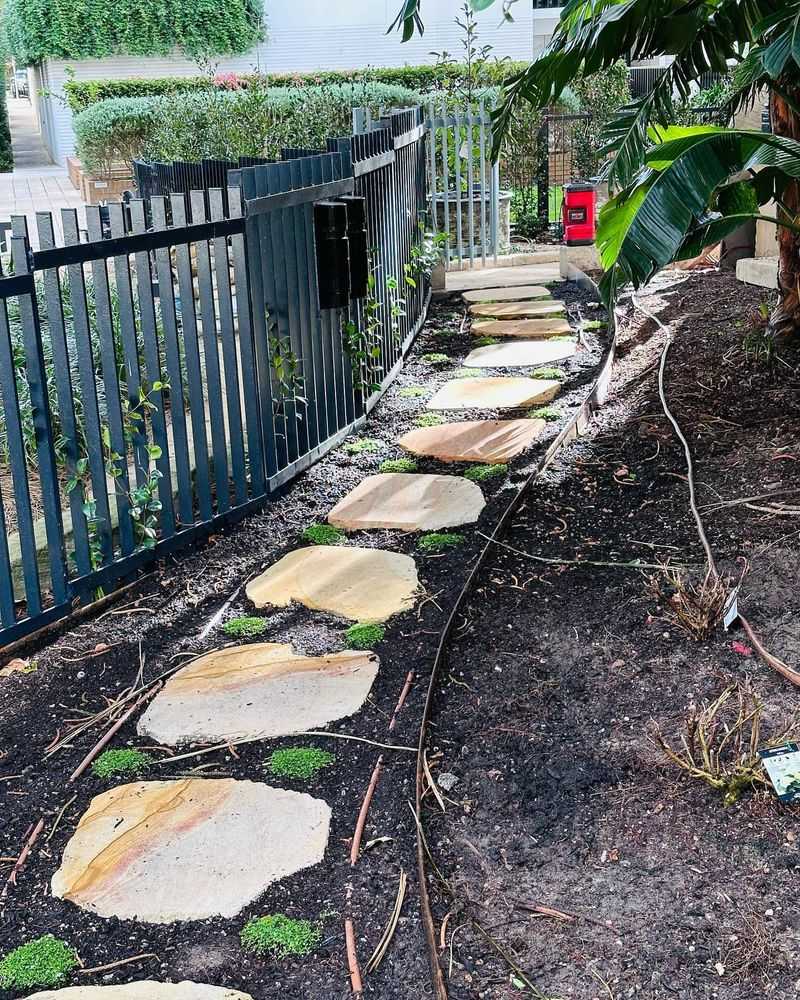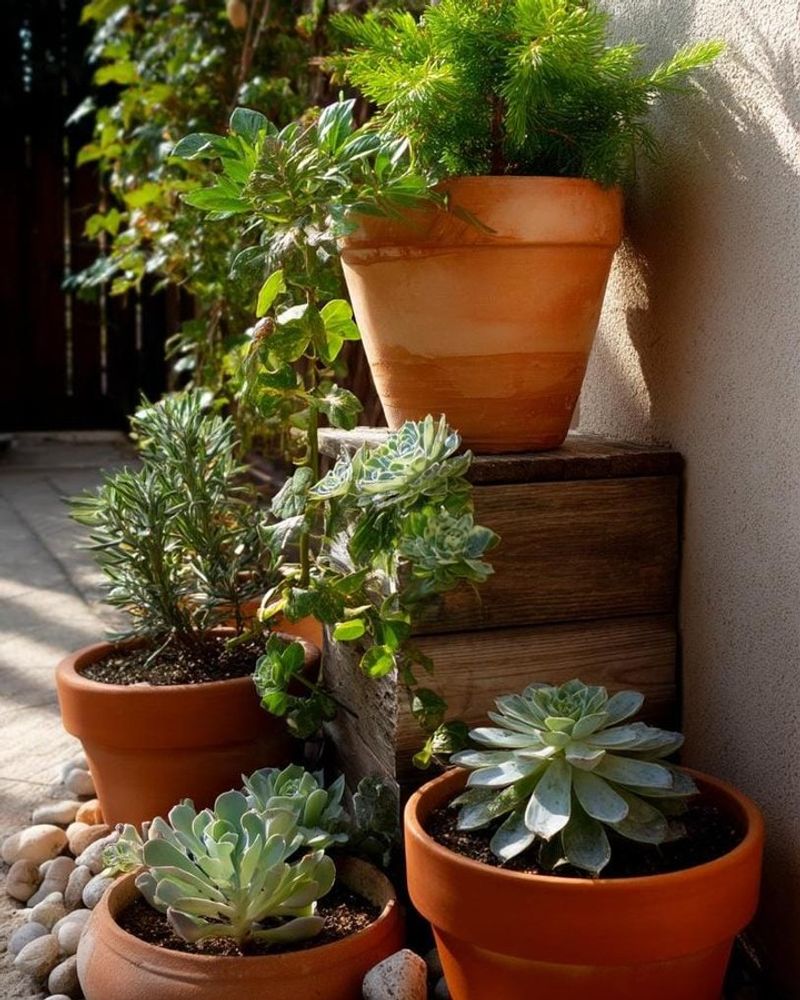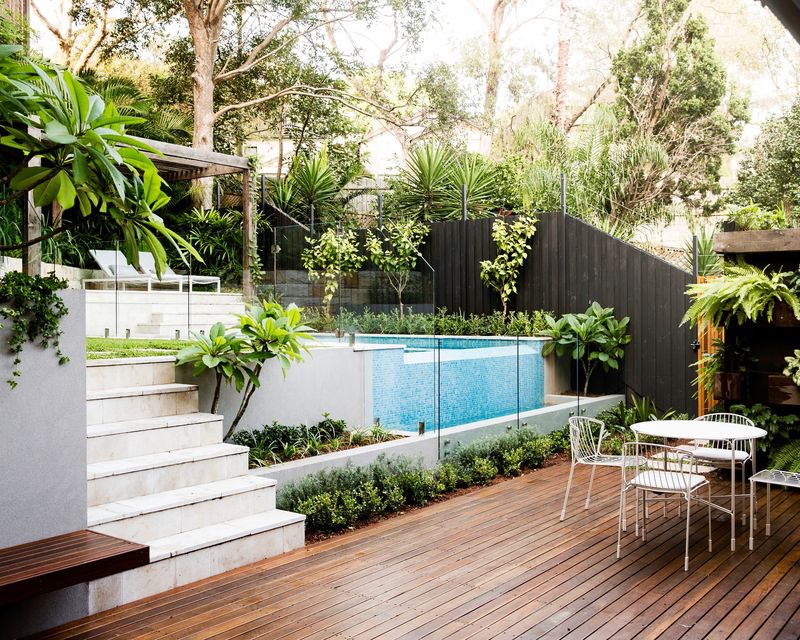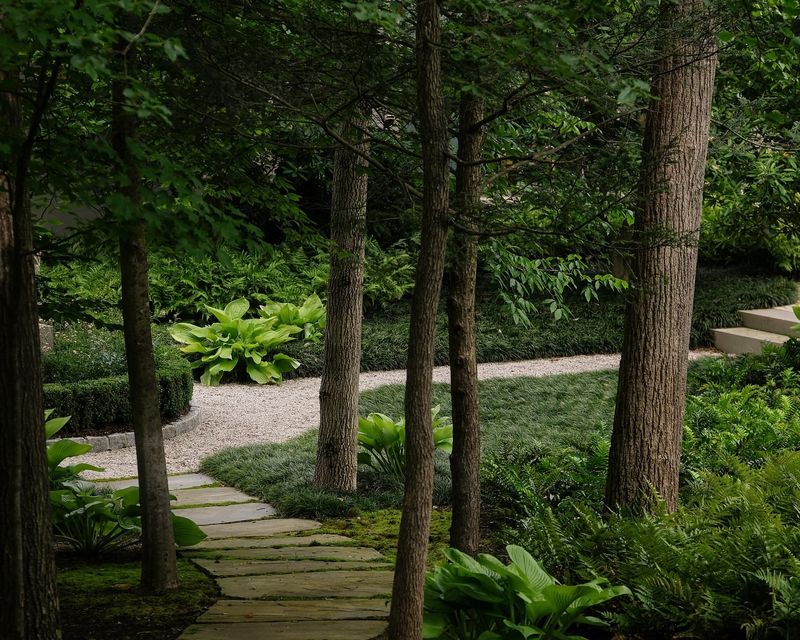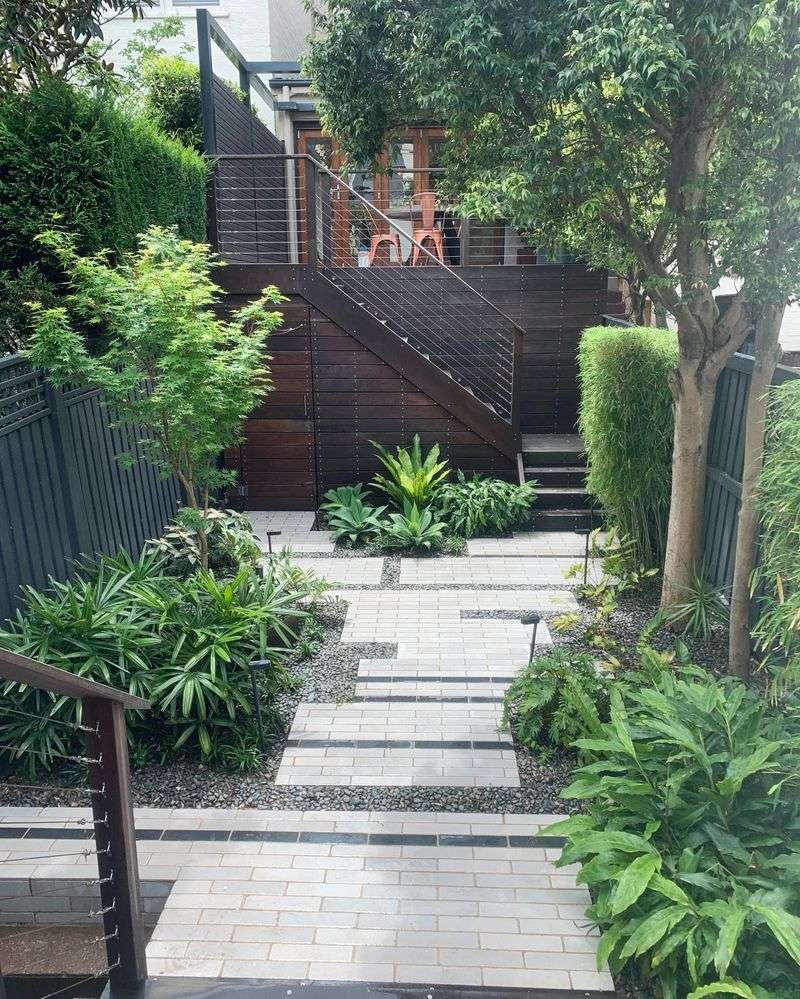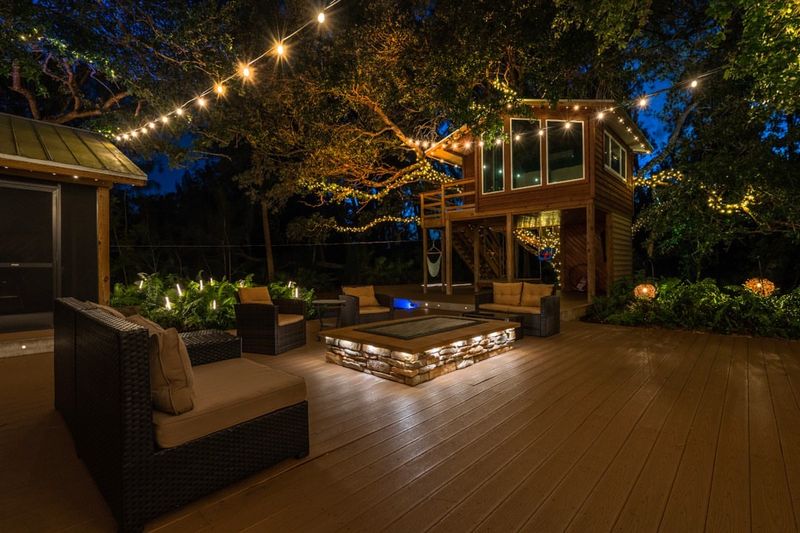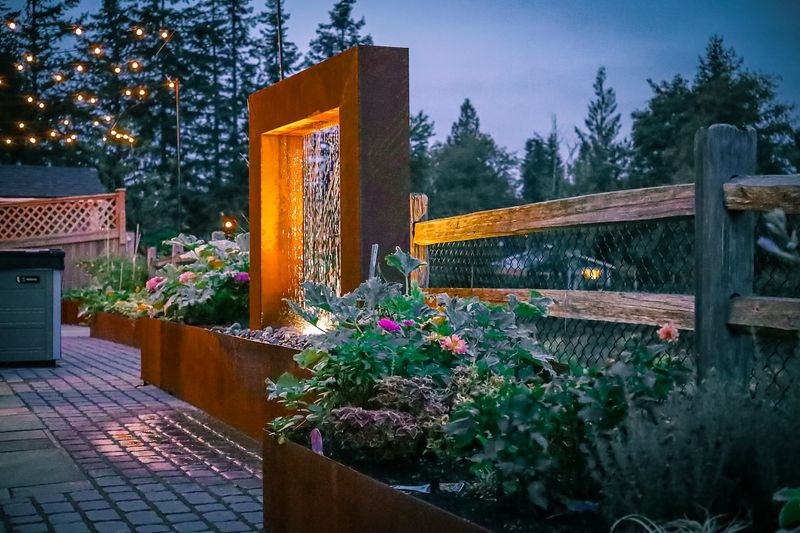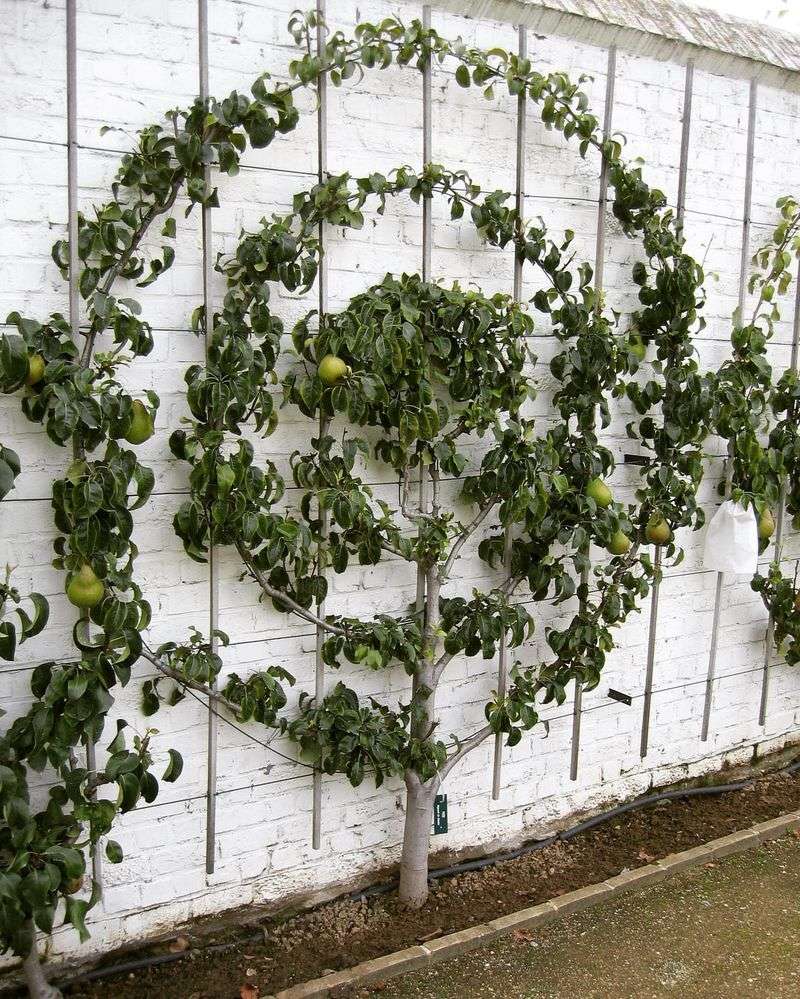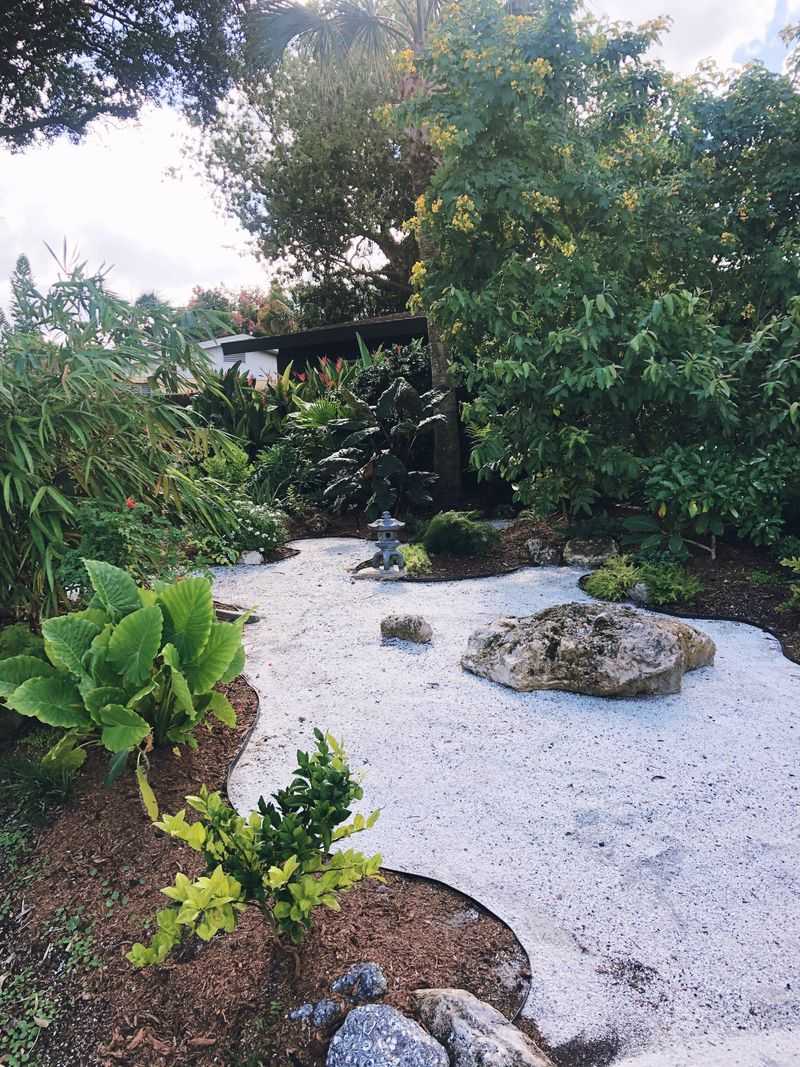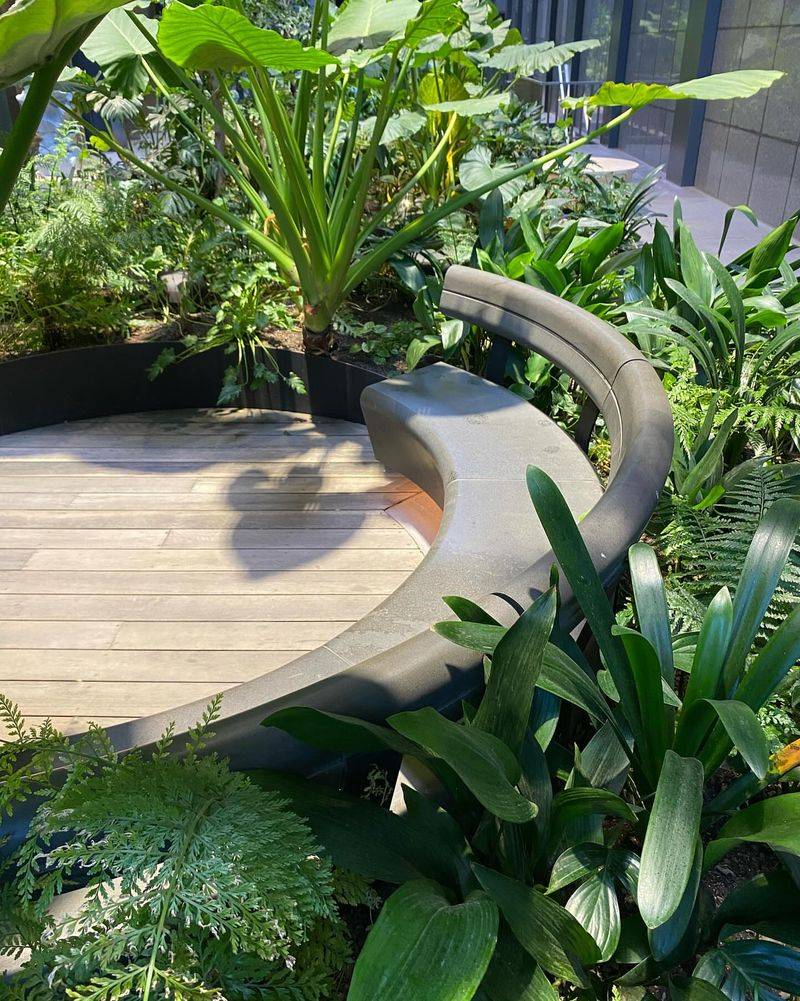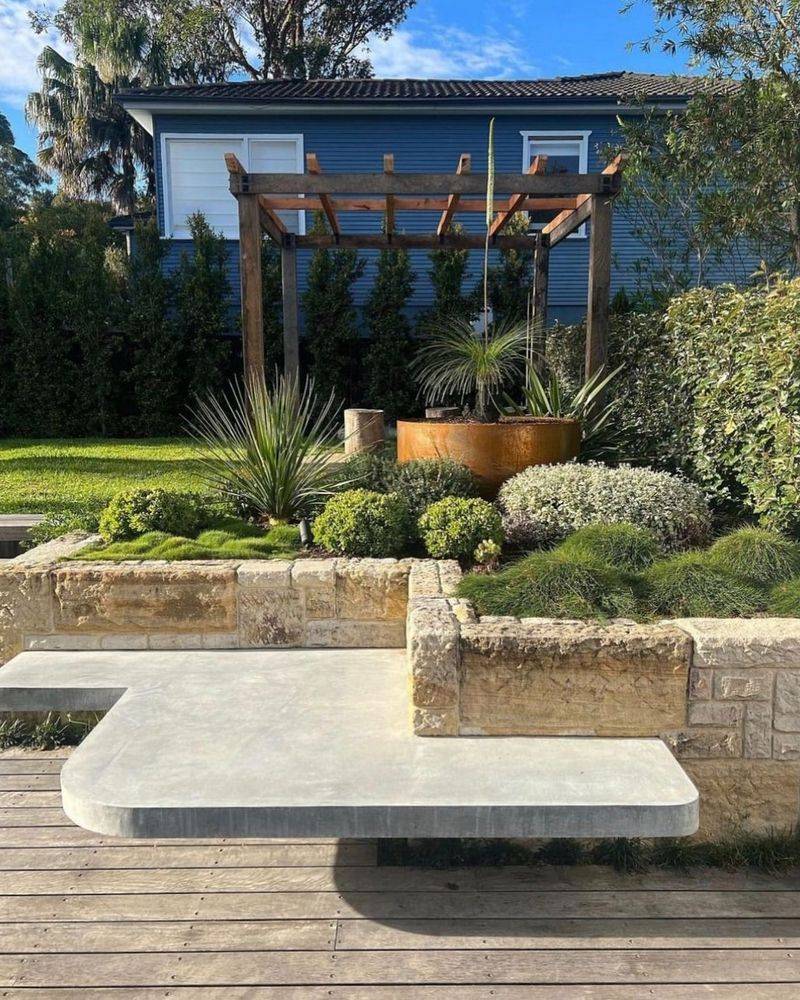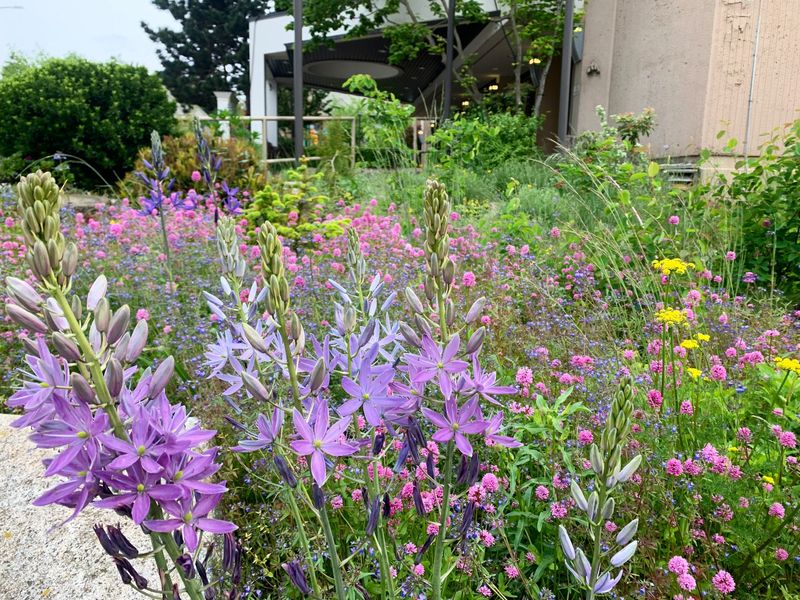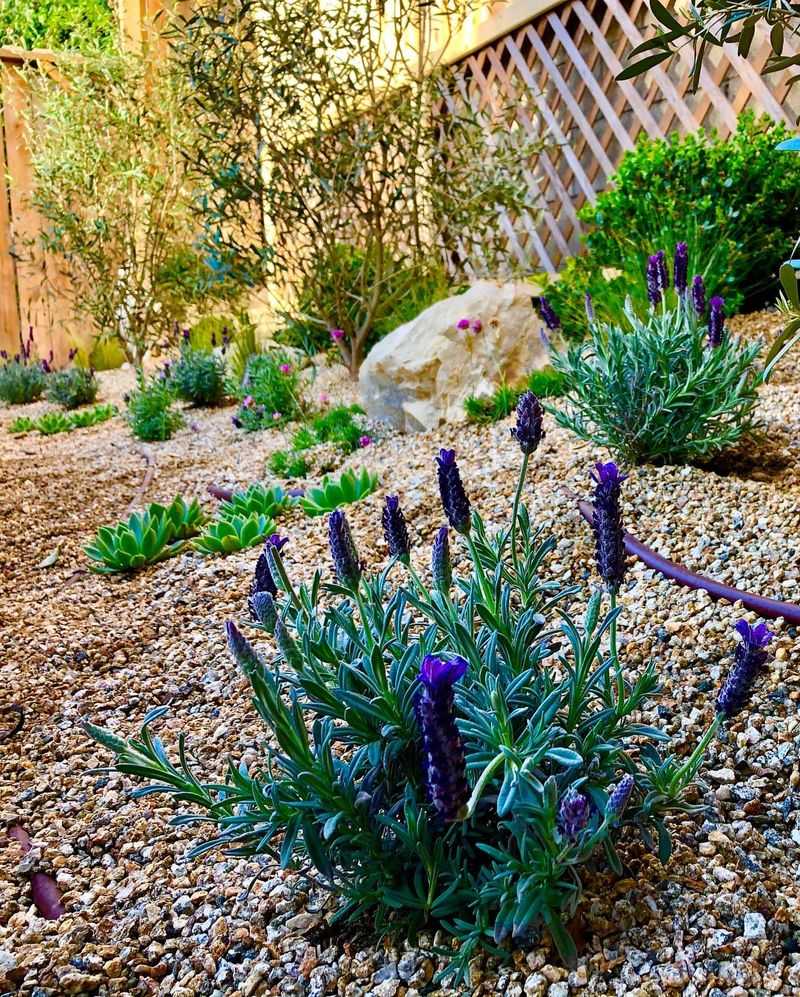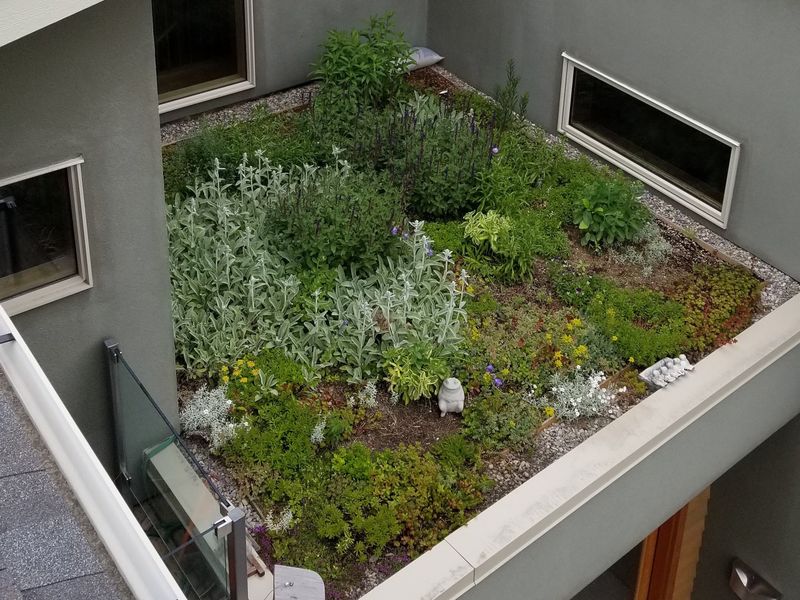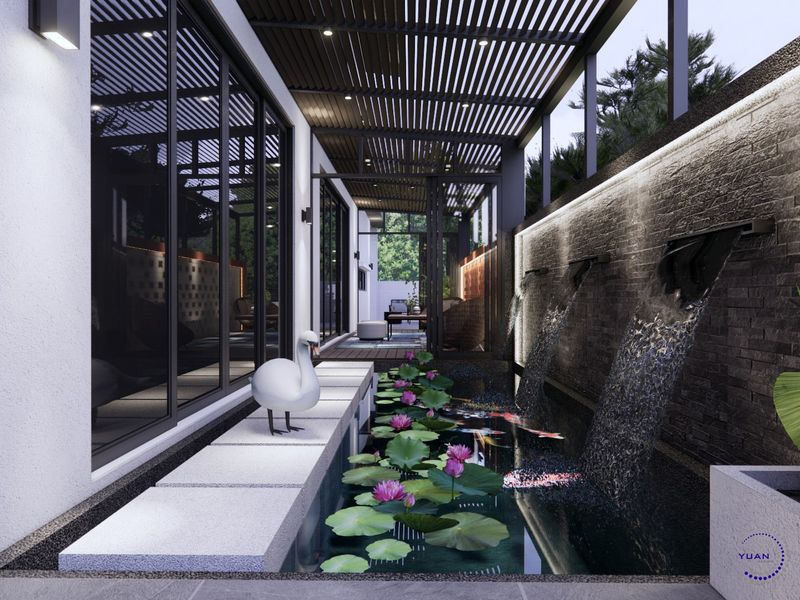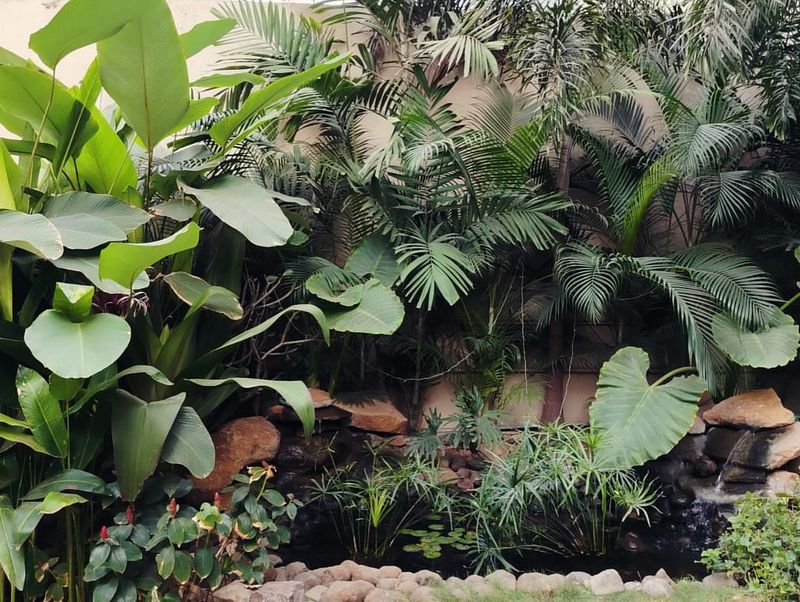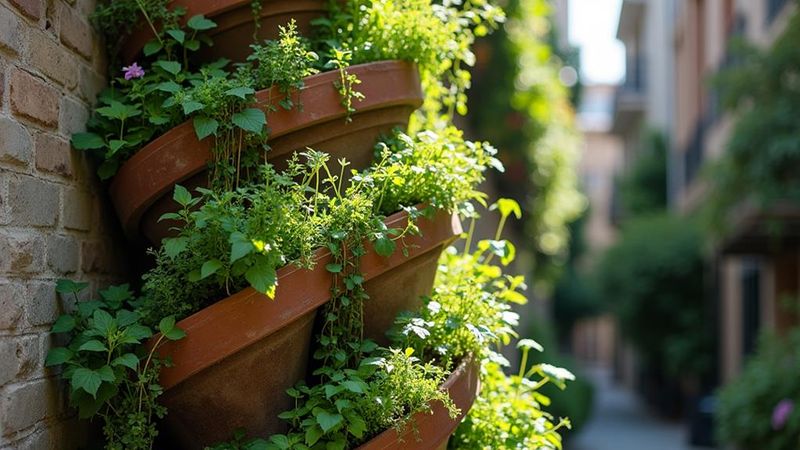Having a skinny backyard might seem like a design challenge, but it’s actually an opportunity to get a little creative. Just because the space is narrow doesn’t mean it has to be boring—or covered in fake grass.
With the right layout and a bit of imagination, even the slimmest yard can feel like an inviting escape. I’ve seen long alley-like spaces transformed into lush garden paths, cozy outdoor dining spots, and even mini retreats with seating nooks and planters.
The trick is working with the shape, not against it—think vertical gardens, layered textures, and winding walkways. Whether your skinny yard wraps behind your house or lines one side of it, there’s potential hiding in that sliver of space. With a few smart ideas, you can turn it into a vibrant, low-maintenance oasis that’s anything but cramped.
1. Create A Meandering Path
Winding paths make narrow spaces feel wider by tricking the eye. I installed a curved stepping stone walkway in my friend’s 8-foot-wide yard, and visitors always comment on how much larger it seems.
Natural materials like flagstone or gravel work wonderfully. The curves slow down movement through the space, creating a journey rather than just a straight shot to the back.
Place interesting plants or small features at each curve to encourage pausing and appreciating different views along the way.
2. Install Vertical Gardens
The walls and fences surrounding your narrow yard are valuable real estate. My own fence supports three living wall panels that provide herbs year-round without taking up precious ground space.
Modular systems with pockets for soil make installation straightforward. Choose plants with similar water needs for each section to simplify maintenance and prevent some areas from drying out while others stay soggy.
Succulents, herbs, ferns, and trailing vines all perform beautifully in vertical gardens, creating a tapestry effect that draws the eye upward.
3. Design A Container Garden Corridor
Containers create instant impact while offering flexibility to move things around. My narrow side yard became a gorgeous passageway with pots of different heights grouped along both sides.
Varying container sizes creates rhythm and prevents monotony. Tall planters with architectural plants work well at key points, while smaller pots can fill gaps and add bursts of seasonal color.
Group containers by water needs for efficient maintenance, and consider self-watering options if you’re not home daily. This approach lets you change the look seasonally without major effort.
4. Build A Multi-Level Deck
Breaking up a narrow space into different levels creates distinct zones that feel like separate rooms. My neighbor transformed her 12-foot-wide yard with three small connected deck platforms at slightly different heights.
Each level can serve a different purpose—dining, lounging, container gardening. The visual breaks between sections make the overall space feel larger and more interesting than a single flat area would.
Adding built-in planters at the edges softens transitions between levels while incorporating greenery without sacrificing usable space.
5. Plant A Woodland Garden
Shade-loving woodland plants thrive in narrow yards between buildings. After struggling with failed grass attempts, I embraced the shadier conditions with ferns, hostas, and shade-tolerant flowering perennials.
The layered effect of taller shrubs, mid-height perennials, and ground covers creates depth. Incorporating elements like moss, small-leaved ivy, and miniature shade plants helps establish that magical forest floor feeling.
Adding a few carefully placed stepping stones through the planting creates access for maintenance while enhancing the woodland path aesthetic.
6. Create A Courtyard Feel With Pavers
Hardscaping with interesting paver patterns can transform a narrow yard into an intimate courtyard. The herringbone pattern I chose for my 10-foot-wide space adds visual interest that plain concrete never could.
Leaving small planting pockets between sections of pavers allows for ground covers to soften the look. Thyme, creeping jenny, and Irish moss all work beautifully in these gaps, adding color and texture while handling light foot traffic.
The courtyard approach works especially well for entertaining since it provides stable footing for furniture and guests.
7. Hang String Lights Overhead
Stringing lights across a narrow space draws the eye upward and creates a magical ceiling effect. Honestly, this $40 addition completely transformed how my family uses our skinny side yard after sunset.
Commercial-grade string lights last longer than decorative holiday versions. Securing them to walls, fence posts, or sturdy poles with proper tension ensures they won’t sag excessively in the middle.
The ambient lighting not only extends usable hours but also creates an intimate atmosphere that makes narrow spaces feel like cozy, intentional gathering spots rather than awkward leftover areas.
8. Install A Water Feature Wall
Narrow yards benefit enormously from the sensory addition of water. A wall-mounted feature takes almost no floor space while creating a focal point that distracts from the yard’s limited width.
Sheet-style water walls where water flows down metal or glass panels produce a soothing sound without the splashing that can occur with fountains. The gentle movement catches light and adds a dynamic element to otherwise static surroundings.
For an unexpected touch, I added small LED lights behind my water panel that create stunning evening effects as they shine through the flowing water.
9. Grow Espaliered Fruit Trees
Fruit trees trained flat against walls or fences produce harvests without taking up precious floor space. My espaliered apple tree grows just 8 inches deep but spans 6 feet wide along my fence.
Common patterns include candelabra, fan, or horizontal cordon shapes. Starting with young, flexible trees makes training easier, though established trees can also be gradually shaped with careful pruning and support wires.
Beyond saving space, the architectural quality of espaliered trees adds year-round structure and visual interest, from spring blossoms to fall fruits.
10. Create A Japanese-Inspired Garden
Japanese garden principles work beautifully in narrow spaces, emphasizing restraint and careful composition. After visiting Kyoto, I redesigned my 9-foot-wide side yard using these concepts, and it now feels twice as large.
Limited plant varieties in carefully considered arrangements prevent visual chaos. Incorporating elements like a small stone path, a carefully placed boulder, and a simple water basin creates focus points that draw attention away from the space’s narrowness.
The resulting garden feels contemplative and serene rather than cramped, proving that thoughtful design can overcome spatial limitations.
11. Design A Pocket Patio
Small circular or hexagonal patios create usable gathering spots without the boxed-in feeling rectangular spaces can give narrow yards. The round patio I installed feels like a distinct destination rather than just a hardscaped corridor.
Surrounding the patio with lush plantings softens the transition between hardscape and garden. Varying the height of these border plants—from ground covers to mid-height perennials to taller architectural specimens—creates depth that makes the area feel more spacious.
Adding a bistro set or small bench completes the pocket patio, creating an invitation to pause and enjoy the garden.
12. Incorporate Raised Planter Beds
Raised beds add dimension to flat, narrow spaces while improving growing conditions. My 18-inch-high cedar planters transformed a problematic clay soil area into a productive garden space that’s easier to maintain without bending.
Varying heights creates visual interest that flat beds lack. Some of mine are just 8 inches tall for shallow-rooted plants, while others rise 24 inches for root vegetables and dramatic display plantings.
The clean edges of raised beds also help define pathways between growing areas, adding structure to narrow spaces that might otherwise feel like undefined corridors.
13. Plant A Butterfly Garden
Narrow spaces can become wildlife corridors with the right plant selection. My 6-foot-wide side yard attracts dozens of butterfly species throughout summer with just a handful of carefully chosen nectar and host plants.
Native milkweed, coneflowers, and lantana provide food sources while creating a colorful display. The vertical growth habit of many butterfly-friendly plants works well in confined spaces, adding height without excessive width.
The constant movement of visiting butterflies adds life and animation to small areas, creating a dynamic feel that static features simply can’t match.
14. Create A Mediterranean-Style Gravel Garden
Drought-tolerant Mediterranean plantings paired with decorative gravel solve drainage issues while creating a sophisticated look. After trying unsuccessfully to grow grass in my narrow side yard, this approach finally gave me a maintenance-free solution.
Small-leaved plants like lavender, rosemary, and santolina contrast beautifully against light-colored gravel. Their aromatic qualities add a sensory dimension that’s especially noticeable in enclosed spaces.
The gravel itself provides a clean, unified background that makes the plantings stand out while effectively suppressing weeds and eliminating the need for mowing.
15. Install A Green Roof Shed
A storage shed with a planted roof serves double duty in tight spaces. The 6×8 structure in my yard’s narrowest section stores garden tools while supporting sedums and low-growing perennials that would otherwise need ground space.
Modern green roof systems make installation simpler than you might expect. Lightweight growing medium specially formulated for roof applications supports plant life without overburdening the structure.
Beyond the space-saving benefits, the living roof absorbs rainwater, provides insulation, and creates habitat for beneficial insects—all valuable additions to small urban gardens.
16. Build A Slender Water Channel
Long, narrow yards are perfect for linear water features that emphasize the space’s natural shape. The 18-inch-wide concrete channel running down my yard’s center transforms what could have been an awkward bowling-alley effect into an intentional design element.
Simple recirculating pumps keep water moving without complex plumbing. The gentle sound masks urban noise while creating a peaceful atmosphere that makes the narrow space feel like a retreat.
Adding small aquatic plants in strategic spots along the channel introduces additional greenery without consuming valuable floor space.
17. Create A Tropical Corridor
Large-leaved tropical plants create a lush, immersive feeling even in tight spaces. My 7-foot-wide passageway between buildings feels like a jungle path rather than a narrow side yard thanks to carefully selected tropical specimens.
Plants like elephant ears, cannas, and bananas grow upward more than outward, providing dramatic foliage without blocking passage. Their oversized leaves create a sense of abundance that belies the limited square footage.
Grouping plants with similar care requirements simplifies maintenance while creating cohesive planting zones that feel intentional rather than cramped.
18. Install A Vertical Herb Spiral
Traditional herb spirals can be adapted into vertical towers for extremely narrow spaces. My 2-foot-diameter version provides growing space for twelve different herbs while taking up minimal ground area.
The spiral design creates varied microclimates as it rises. Sun-loving Mediterranean herbs thrive on the upper south-facing sections, while shade-tolerant varieties like mint and chervil occupy the lower, cooler spots.
Beyond its space efficiency, the spiral becomes a sculptural element that adds height and visual interest to narrow yards that might otherwise feel flat and one-dimensional.


